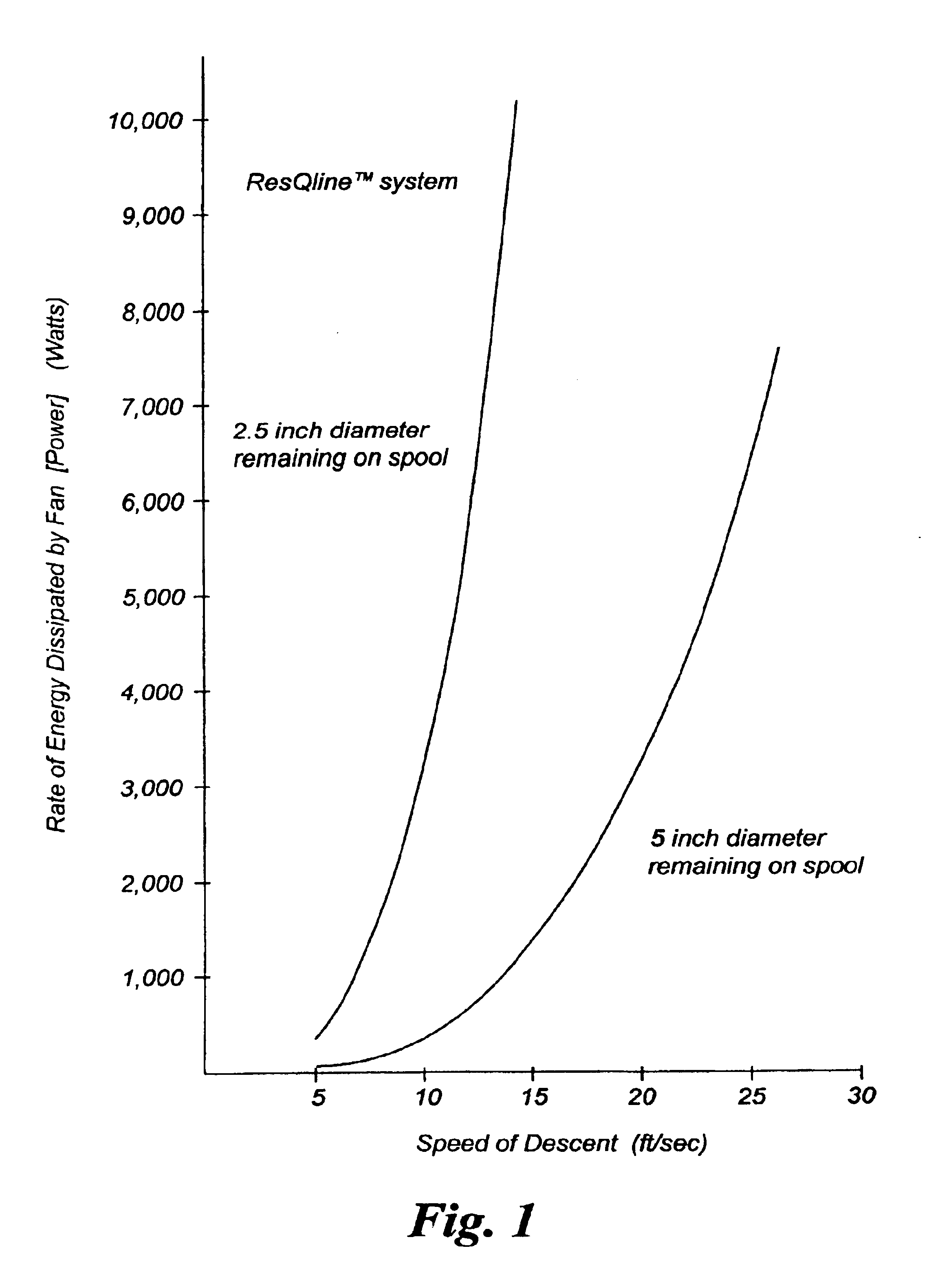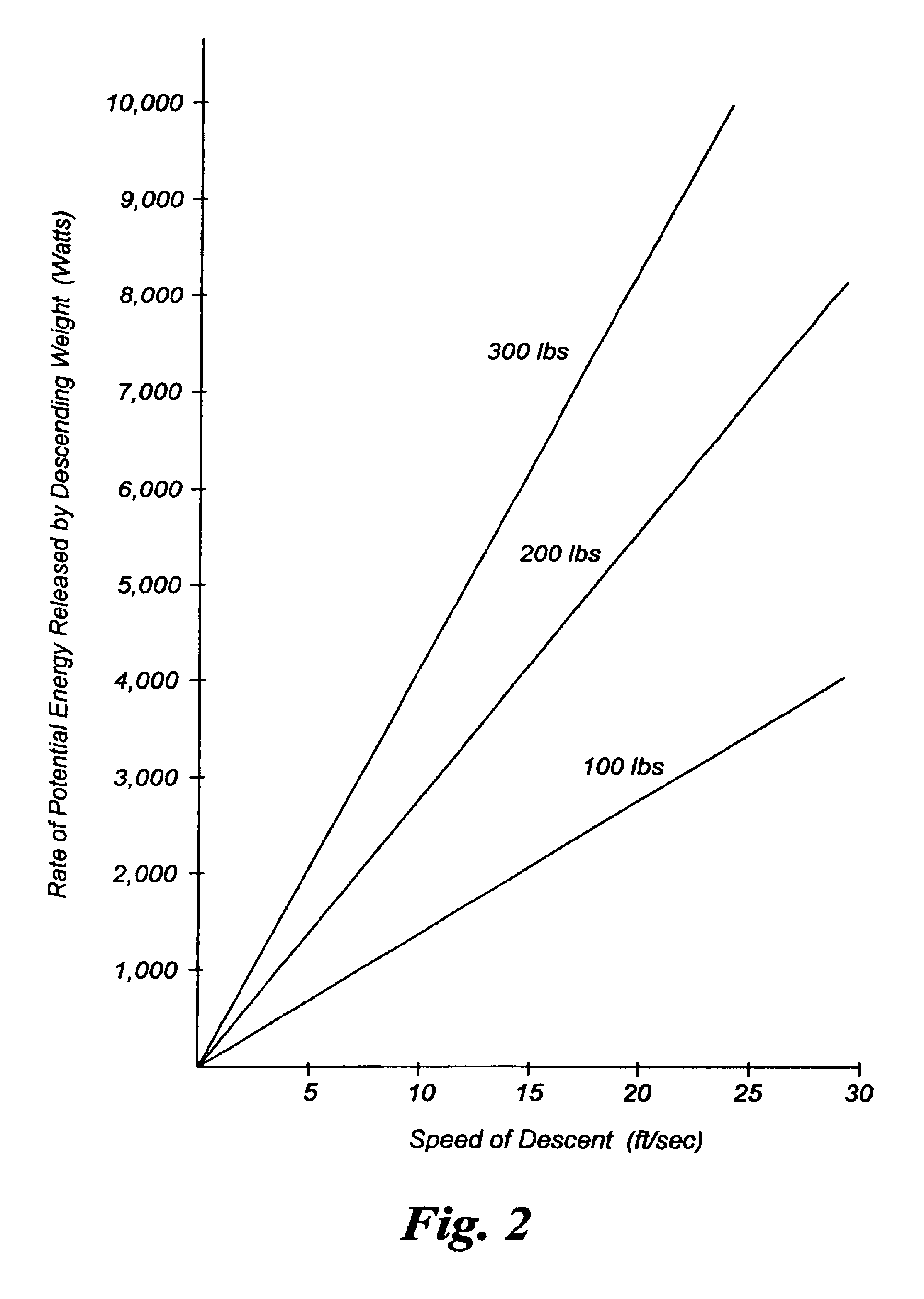Apparatus for exterior evacuation from buildings
- Summary
- Abstract
- Description
- Claims
- Application Information
AI Technical Summary
Benefits of technology
Problems solved by technology
Method used
Image
Examples
Embodiment Construction
Understanding the Physics
[0023]Picture a 200 pound man about to jump from the window of a burning building from a height of 1,000 feet. He has zero kinetic energy. However, he has 200,000 ft-lbs of potential energy. If he jumps—neglecting the small portion of that energy that gets converted to heat energy by the air resistance as his speed increases—all that potential energy gets converted to 200,000 ft-lbs of kinetic energy which will increase his speed to 252 ft / sec (172 MPH) by the time the unfortunate fellow hits the ground 8 seconds later. What can save him is a mechanism for dissipating all the released potential energy that otherwise goes toward increasing his descent velocity. That descent-slowing, energy-dissipating mechanism would convert the released potential energy into increased random kinetic energy of the individual air molecules that surround the mechanism, with a portion temporarily going into increased random kinetic energy of the individual molecules of the mecha...
PUM
 Login to View More
Login to View More Abstract
Description
Claims
Application Information
 Login to View More
Login to View More - R&D
- Intellectual Property
- Life Sciences
- Materials
- Tech Scout
- Unparalleled Data Quality
- Higher Quality Content
- 60% Fewer Hallucinations
Browse by: Latest US Patents, China's latest patents, Technical Efficacy Thesaurus, Application Domain, Technology Topic, Popular Technical Reports.
© 2025 PatSnap. All rights reserved.Legal|Privacy policy|Modern Slavery Act Transparency Statement|Sitemap|About US| Contact US: help@patsnap.com



